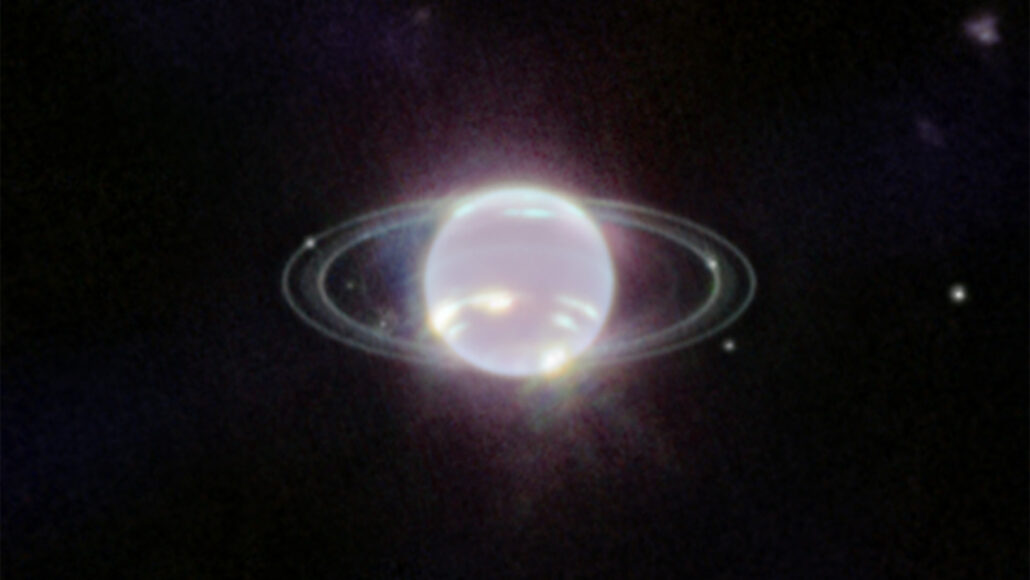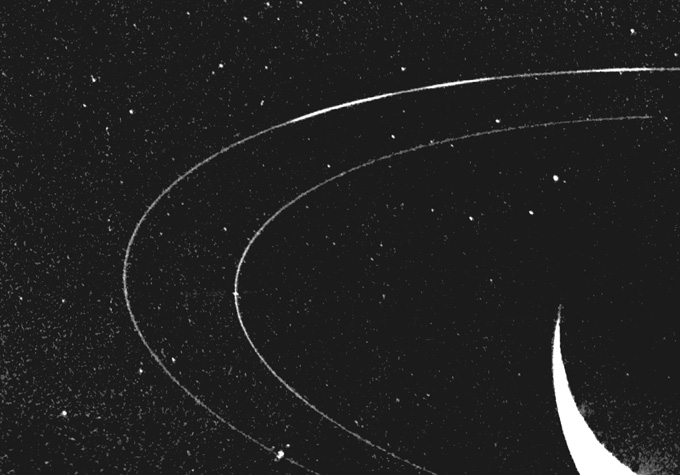arc: A curve, often mapping out what appears to be part of a circle.
atmosphere: The envelope of gases surrounding Earth, another planet or a moon.
cloud: A plume of molecules or particles, such as water droplets, that move under the action of an outside force, such as wind, radiation or water currents. (in atmospheric science) A mass of airborne water droplets and ice crystals that travel as a plume, usually high in Earth’s atmosphere. Its movement is driven by winds.
concentric: A series of circles or rings that have a common center point.
evolve: (adj. evolving) To change gradually over generations, or a long period of time. In living organisms, such an evolution usually involves random changes to genes that will then be passed along to an individual’s offspring. Nonliving things may also be described as evolving if they change over time. For instance, the miniaturization of computers is sometimes described as these devices evolving to smaller, more complex devices.
infrared: A type of electromagnetic radiation invisible to the human eye. The name incorporates a Latin term and means “below red.” Infrared light has wavelengths longer than those visible to humans. Other invisible wavelengths include X-rays, radio waves and microwaves. Infrared light tends to record the heat signature of an object or environment.
insight: The ability to gain an accurate and deep understanding of a situation just by thinking about it, instead of working out a solution through experimentation.
methane: A hydrocarbon with the chemical formula CH4 (meaning there are four hydrogen atoms bound to one carbon atom). It’s a natural constituent of what’s known as natural gas. It’s also emitted by decomposing plant material in wetlands and is belched out by cows and other ruminant livestock. From a climate perspective, methane is 20 times more potent than carbon dioxide is in trapping heat in Earth’s atmosphere, making it a very important greenhouse gas.
Neptune: The farthest giant planet from the sun in our solar system. It is the fourth largest planet in the solar system.
reflective: Adjective that refers to the ability of something to reflect light strongly. Such objects can produce a strong bright glare when sunlight bounces off of them. Examples of reflective objects include a mirror, a smooth metal can, a car window, a glass bottle, ice, snow or the watery surface of a lake.
Saturn: The sixth planet out from the sun in our solar system. One of the two gas giants, this planet takes 10.6 hours to rotate (completing a day) and 29.5 Earth years to complete one orbit of the sun. It has at least 82 moons. But what most distinguishes this planet is the broad and flat plane of bright rings that orbit it.
star: The basic building block from which galaxies are made. Stars develop when gravity compacts clouds of gas. When they become hot enough, stars will emit light and sometimes other forms of electromagnetic radiation. The sun is our closest star.
telescope: Usually a light-collecting instrument that makes distant objects appear nearer through the use of lenses or a combination of curved mirrors and lenses. Some, however, collect radio emissions (energy from a different portion of the electromagnetic spectrum) through a network of antennas.









